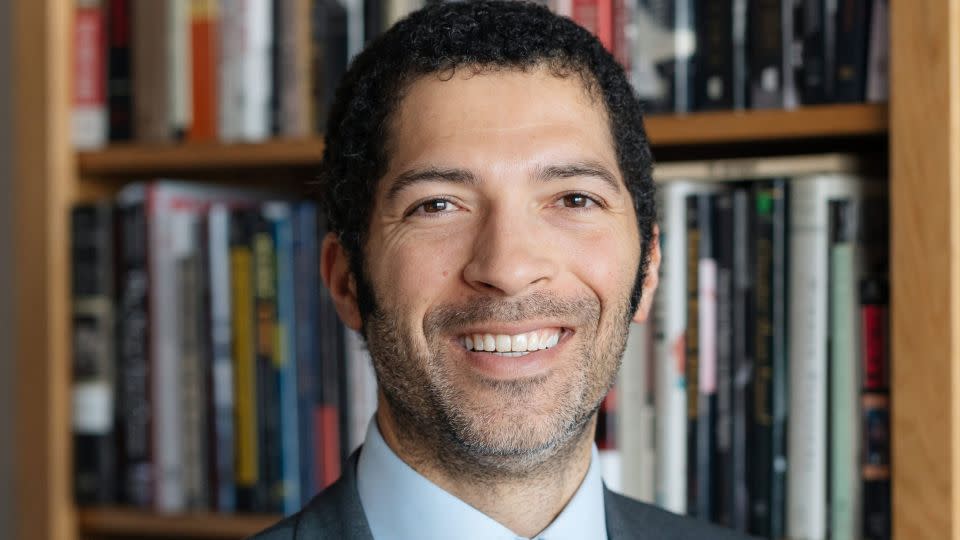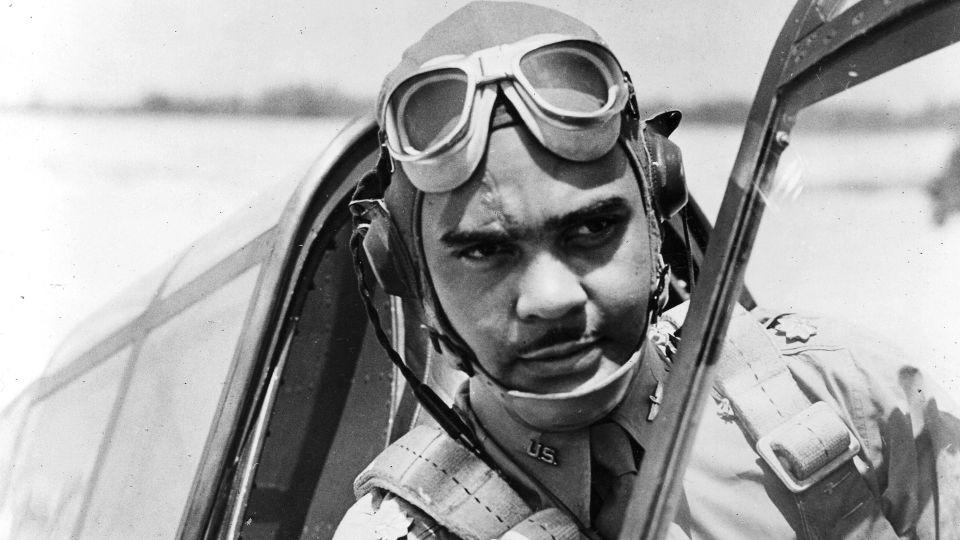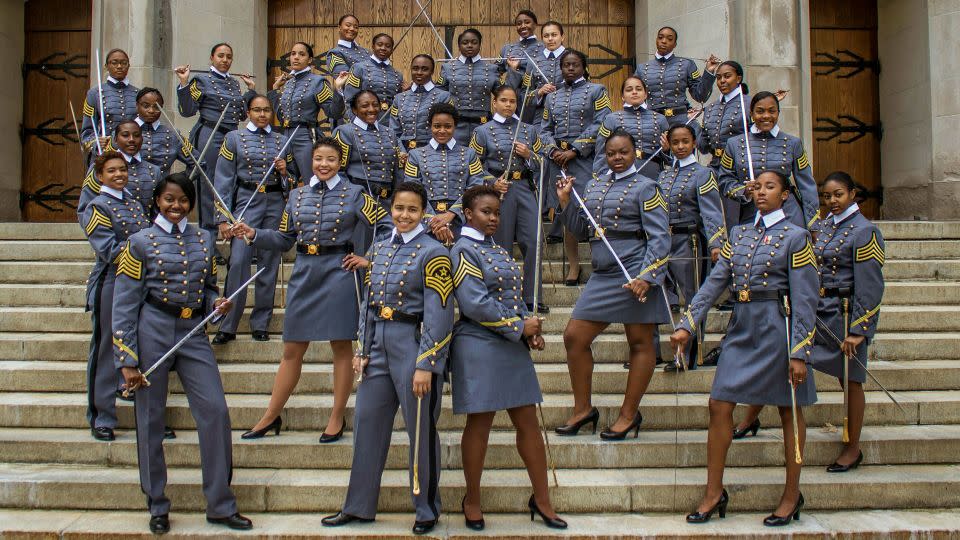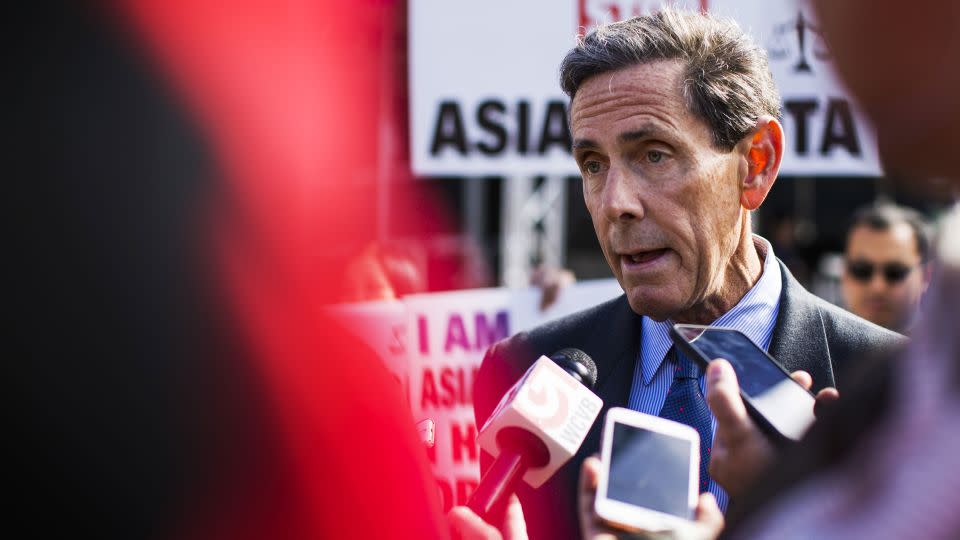Opinion: This lawsuit is about far more than what happens at West Point
Editor’s Note: Matthew F. Delmont is Frank J. Guarini Associate Dean of International Studies and Interdisciplinary Studies and the Sherman Fairchild Distinguished Professor of History at Dartmouth College. He is the author of “Half American: The Epic Story of African Americans Fighting World War II at Home and Abroad.” The views expressed here are his own. Read more opinion on CNN.
Last week, Students for Fair Admissions, a conservative group, filed a lawsuit against the US Military Academy at West Point, contending that the academy’s use of race in admissions is unconstitutional. This comes on the heels of the group’s victory in June in a landmark Supreme Court case against Harvard University and the University of North Carolina at Chapel Hill over affirmative action.
The lawsuit asks the court to take up an issue that was mentioned in passing in the earlier case. A footnote in Chief Justice John Robert’s majority opinion notes that the military academies were not party to Students for Fair Admissions v. Harvard, and left open the possibility that the military academies may present “potentially distinct interests.”

In her dissent, Associate Justice Ketanji Brown Jackson expressed frustration that the court’s majority “has come to rest on the bottom-line conclusion that racial diversity in higher education is only worth potentially preserving insofar as it might be needed to prepare Black Americans and other underrepresented minorities for success in the bunker, not the boardroom.”
Military leaders have clearly and consistently made the case that a highly qualified and diverse officer corps is important for national security, and the court has previously deferred to their judgement.
If this new lawsuit eventually reaches the Supreme Court, the justices need to understand the military’s specific history of racial discrimination, present-day racial demographics and how both have influenced West Point’s use of modest, race-conscious admissions policies.
This suit has the potential to undo more than five decades of efforts to expand the racial diversity of the nation’s military leaders. West Point has nearly 4,400 undergraduates, 61% of whom are White, 11% Black, 12% Hispanic/Latino, 9% Asian and less than 1% American Indian or Alaska Native. While the racial demographics of West Point today resemble America, that was not always the case.
When Benjamin O. Davis Jr. graduated from the academy in 1936, he was the first Black person to do so in the 20th century. He recalled that his White classmates refused to speak to him beyond military commands for his four full years at the academy.
After being frozen out at West Point, Davis joined a racially segregated US Army and blazed a trail as a commander of the Tuskegee Airmen in World War II and, later, as the Air Force’s first Black general.

After President Harry Truman signed Executive Order 9981 in 1948, which mandated the desegregation of the military, things changed very slowly at West Point. As historian Beth Bailey writes in “An Army Afire,” “during the 1950s, there were never more than 20 African American cadets in all four classes combined,” less than 1% of the total enrollment. In 1967, two Black cadets graduated. By 1968, only 68 Black cadets had graduated from West Point in the academy’s 166-year history.
That year, under pressure from civil rights activists and the Department of Defense, West Point launched an effort to recruit more minority students.
Under the leadership of a new admissions officer, Lt. Col. Manley Rogers, the academy sent a mass mailing to potential minority applicants, encouraged school principals and guidance counselors to recommend candidates and recruitment rallies in cities across the country. They also added a question about racial identity to the application form.
The recruitment campaign was successful. The academy enrolled a record nine Black cadets in 1968, and then 47 the next year. These changing demographics coincided with the academy’s expansion during the Vietnam War era, from 2,500 cadets in 1965 to around 4,400 in 1971.
These Black cadets, in turn, fought to change West Point. In 1971, the school’s Black cadets, as well as the small number of Black instructors and Black cadets in the school’s chain of command, signed a manifesto protesting President Richard Nixon’s order that the academy build a monument to “West Pointers who lost their lives serving on the Southern side” of the Civil War. The protest got Nixon to back down and convinced the administration to more proactively recruit and support both Black instructors and students.
Many of the Black cadets who graduated in this era went on to have distinguished careers in the Army. Lloyd Austin, for example, graduated from West Point in 1975 and rose to the rank of four-star general before retiring in 2016. In 2021, he became the first Black Secretary of Defense.

By the 1980s, when Black cadets made up around 8% of West Point’s enrollment, the academy faced intense competition from other elite colleges and universities. “It’s often an executive search type of operation — telephone calls, letters and visits to the home — or the kind of thing you’d see for an athlete,” Rogers said in 1985. “We even have faculty members go to the homes of outstanding minority students to explain the programs, the environment and the career opportunities here.”
West Point’s leaders went to these great lengths to recruit minority candidates because they believed it was important for the academy and the leaders it produced to resemble the nation they protect.
The same thing is true today. When West Point graduates are commissioned as second lieutenants, they take on leadership roles in an organization that is as racially diverse as any in America. Of the more than 366,000 active-duty enlisted personnel in the Army, 50% are White, 22% are Black, 19% are Hispanic, 7% are Asian or Pacific Islander and 1% are American Indian or Alaskan Native. The percentages of Black and Hispanic officers are lower, at 11% and 9%, respectively.
These numbers reflect a long-term trend. Since the military became an all-volunteer force in 1973, Black Americans have been overrepresented in the armed forces.
Last week, the Senate confirmed General Charles Q. Brown, a former fighter pilot and chief of staff of the Air Force, as the chairman of the Joint Chiefs of Staff. This marks the first time that both the country’s senior ranking military officer and Secretary of Defense are Black Americans.
Images of minority cadets at West Point, such as the record number of Black women who graduated in recent years, are not only symbolic. They speak to a sustained effort to recruit and develop a talented and racial diverse officer corps to lead a racially diverse Army. Notably, Black women make up 36% of all enlisted female personnel in the Army.

Thirty-five top former military leaders from all four services filed an amicus brief in Students for Fair Admissions v. Harvard that emphasizes this point.
“The importance of maintaining a diverse, highly qualified officer corps has been beyond legitimate dispute for decades,” the brief argues. “History has shown that placing a diverse Armed Forces under the command of homogenous leadership is a recipe for internal resentment, discord, and violence. By contrast, units that are diverse across all levels are more cohesive, collaborative, and effective.”
While graduates of the US Military Academy, as well as the service academies for the Air Force, Coast Guard, Merchant Marine and Navy, make up less than 20% of officers serving in the armed forces, the academies and their alumni have an outsized impact on the military.
More broadly, political scientist Jason Lyall has found that diversity and inclusion are good for military effectiveness. Based on data on ethnic and racial inequalities in nearly 850 armies and 250 wars fought since 1800, Lyall’s evidence shows that “victory on the battlefield over the past 200 years has usually gone to the most inclusive armies, not the largest or best-equipped ones.”
The US military recognizes this reality. Amidst attacks on the so-called “woke military,” by some politicians and media pundits, it is important to remember that over the past several decades the armed forces have thought longer and harder about diversity than most corporations and universities because they see it as central to their mission and operational effectiveness.
This new lawsuit, brought on behalf of two White high school students who plan to apply to West Point, in not an anomaly. Edward Blum, the conservative activist who founded Students for Fair Admissions, is also suing two international law firms for providing diversity fellowships and has a goal of getting at least two more cases to the Supreme Court in the next five years to limit the use of race and ethnicity in employment and internships.
These legal challenges are designed to make tomorrow’s military, corporate, political and academic leaders less racially diverse, rolling back progress that has been painfully slow. Today’s leaders can respond to this threat by strategizing across industries to clearly articulate why racial diversity makes organizations and workplaces stronger.
For more CNN news and newsletters create an account at CNN.com

